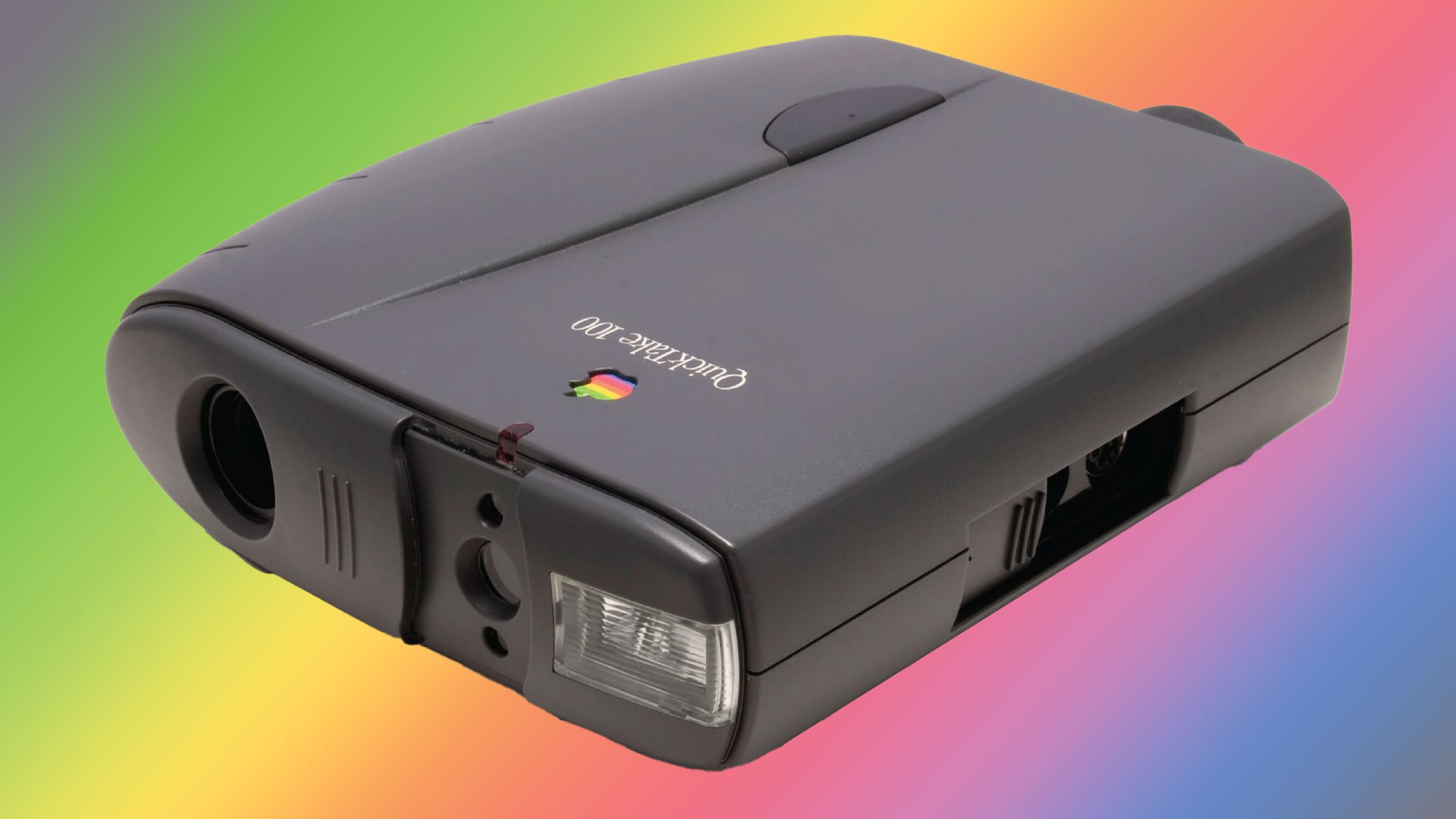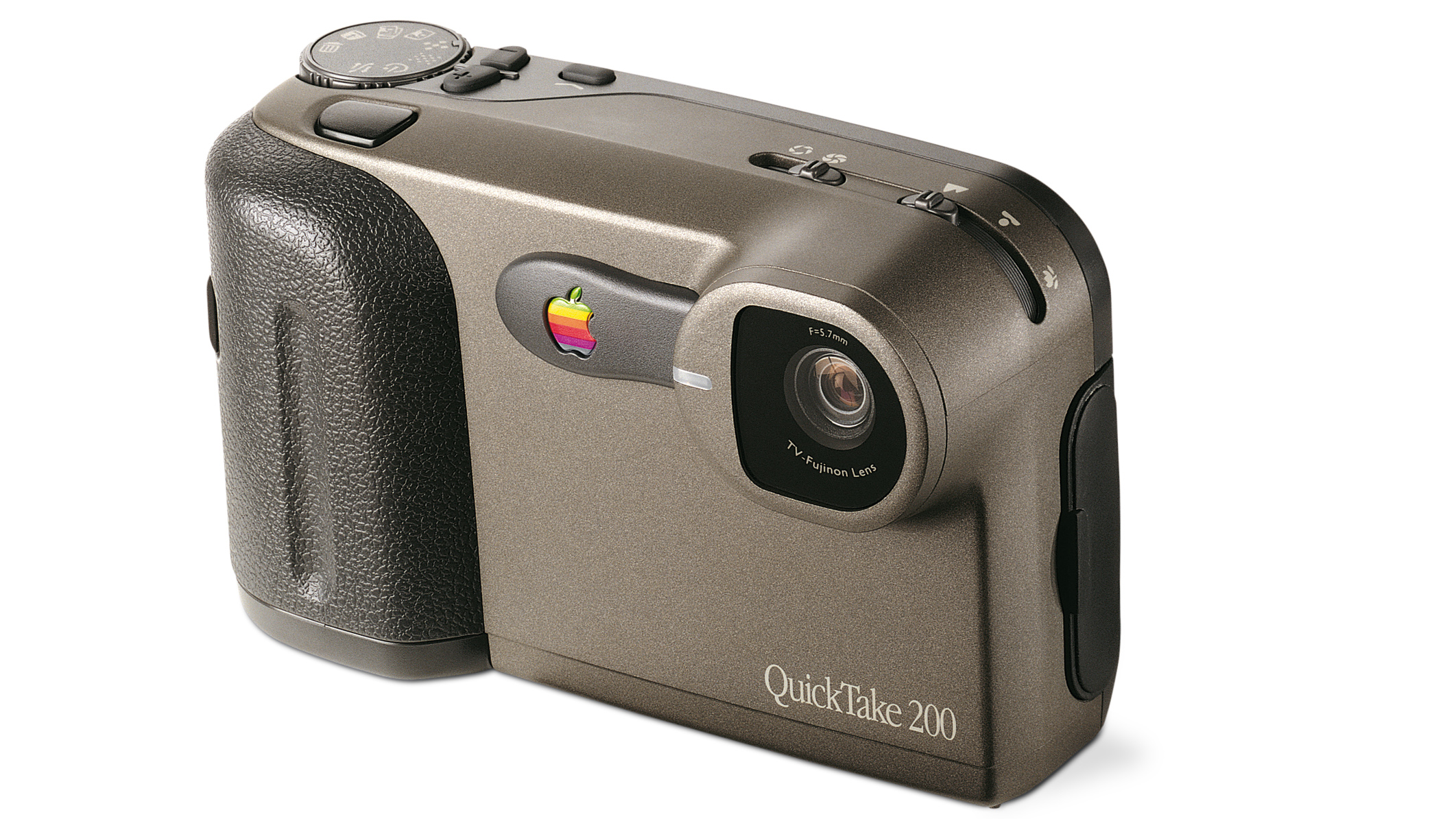
The first digital camera it is not. There were others before and, of course, there have been many since. But it was the first practical digital camera for under $1,000. As a result history has remembered the QuickTake 100 as a significant step toward the digital camera as a consumer device.
To be exact, the QuickTake 100 (known inside Apple as 'Project Venus') was officially launched at MacWorld – a trade show in Japan – in February 1994. It was $749 (about $1,575 in today's money), boasted a maximum resolution of 640 x 480 and a memory of just eight shots (if you insisted on using that maximum resolution).
To be fair, that was a screen-filling amount for a standard resolution monitor of the day, and would be more than big enough if you were experimenting with that new 'World Wide Web' everyone was talking about. (Well, everyone in the computer department, anyway.) At the time the web was poised to emerge into the public consciousness as NSCA Mosaic had just allowed images onto web pages and later in 1994 Netscape Navigator would come along too.
The web wasn't everything either; 640 x 480 was also a very practical image size of the kind of listing magazine single-column ads which needed to be published at speed at the time, so the QuickTake 100 had a lot of practical uses – despite what we smug folk from 'the future' might at first feel!
Back to the device. Apple did the industrial design, including not just the body but the user interface (a mono LCD, which was not a viewfinder), while Kodak provided a lot of the camera tech. (At the time, Kodak was also involved in designing digital camera backs for cameras like the DCS 420 for the Nikon N90, which had a whopping 1.2 megapixels; that, however, took a DSLR and added another DSLR-sized lump underneath and cost around $12,000.)
The QuickTake 100 shot images to internal memory only, but at least it was non-volatile (you could swap the batteries without wiping it). Because there was no LCD to check images, you could only delete all the images at once. Given the capacity, you had to be even more careful than with film – the advantage was more in the speed. To view them back, you needed to copy them to a Mac (and, later, a Windows machine) using a DIN serial cable and – because it was a proprietary format – convert them to TIFF or JPEG using the app.
To Apple's credit, the app even allowed tethered use, and the camera did have a tripod thread. When handheld, it can be held in one hand or two, a little like binoculars (a design seen in several Kodak devices afterward). It had a sliding lens protector in the front, and though it only lasted a couple of years, it wasn't Apple's last effort at a camera.

There was the QuickTake 150, which was effectively a firmware update that improved compression for more images (in fact, apple offered a factory upgrade to 100 owners and called the result a '100 Plus' rather than a 150).
Later came a more traditionally camera-shaped QuickTake 200 in 1996 built this time by Fujifilm, and hosting removable media in the form of SmartMedia (SSFDC) – that's up to 20 640x480 images! More significantly, there was now a 1.8-inch color LCD viewfinder, but while the camera sold just fine in Apple's education and small business markets, the traditional brands were dominant by now. In 1997, Steve Jobs arrived back at Apple, and the photography line was an obvious contender for his streamlining.
Don't worry though. Ten years later, Steve Jobs did put a camera back in an Apple product, when the first of the iPhone generations was announced...
We keep a guide to the best retro cameras and you can always go vintage with film.







